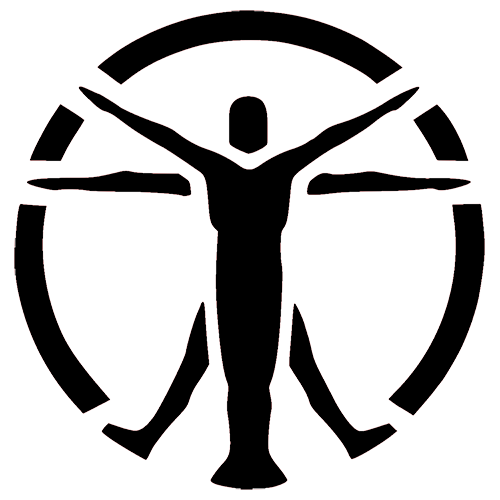Getting rid of hair forever is a tempting prospect: no need to irritate your skin with shaving every day and wait for your hair to grow back enough for scheduled hair removal. Also, you don’t need to worry if you didn’t have time to shave your hair, and it gets in the way. Or waxing, especially in sensitive areas, can be quite a painful procedure, unlike laser hair removal.
So, laser hair removal can be a good option for you, but it’s worth getting to grips with all the ins and outs of this procedure first. In our article, we will tell you about it in detail, including how many sessions you need for the best result.
What Is Laser Hair Removal?
Laser hair removal is a cosmetic procedure, a method of radical hair removal on the body that involves the destruction of hair follicles using laser radiation (light with a high energy density, one wavelength, and high directionality). Unlike conventional shaving, hair removal provides much more long-term results, as the device removes each hair with the bulb separately, and the growth of a new one begins only after it has formed, which takes at least four weeks.
But each person’s changes can go differently, because everyone has their own peculiarities of hair and skin, and it is very important to take this into account when doing laser hair removal.
So, the laser removes hair by aiming at targets in the skin. They can include the dark pigment melanin, which is responsible for hair and skin color, hemoglobin in blood vessels, and water.
How Does It Work?

Laser hair removal suppresses hair growth by using intense laser pulses of a certain spectral spectrum. Red alexandrite or ruby laser light is efficiently absorbed by melanin found in hair roots and follicles, but it also freely penetrates the skin’s surface layers. The light pulse’s energy is absorbed by the hair follicles and turned into thermal energy, which causes them to heat up and die. As a result, new hair growth is halted. The duration and energy of the laser pulse are set such that the follicles can be destroyed without causing damage to the surrounding skin.
Laser hair removal typically causes less skin irritation than other hair removal methods because it uses light to eliminate hair. During a single impulse, a spot with a diameter of up to 18 mm (depending on the laser intensity and the detachable fiber optic instrument employed) is illuminated. There is no need to target each hair as with electroepilation because the entire lighted region of the skin is treated instantaneously. This allows for quick and precise treatment of large areas of skin in just a few minutes.
During the procedure, the light from the device is absorbed by melanin, the pigment in the hair. The pigment heats up and begins to destroy neighboring cells responsible for growth or nearby blood vessels that deliver nutrients to the follicle. The root is destroyed, and the hair itself falls out after a few weeks.

Also, except for gray hair that lacks melanin pigment, laser hair removal is efficient in eliminating all forms of hair.
Benefits of Laser Hair Removal
Sometimes people may hear about something popular, but not know exactly why it has become such a common trend. So let’s explore the benefits of laser therapy and how they play out.
- Effectiveness. You will notice the result after the first session. For the final result, you need generally between 6 and 8 sessions, but it depends on the area you want the hair removal for. With each subsequent session, you’ll have less and less unwanted hair.
- Safety. This procedure is safe as it is unable to influence the function of internal organs, lymph nodes, or hormone production. The laser penetrates the dermis for 1-4 mm, this depth of penetration allows the best possible interaction with hair follicles.
- Works with any type of skin. Modern diode lasers can work even with dark skin and light hair. But ideally, the contrast between dark hair and light skin should be preserved.
- Painless. You won’t feel pain during the session, only a slight tingling is possible. But if you feel discomfort, the doctor will be able to apply analgesics in the epilation area. If waxing was not only painful but also long-lasting, the laser works quickly and accurately.
- Does not damage the skin. Laser hair removal eliminates hair ingrowth and skin irritation.
- Universal method. Even the most sensitive areas such as the upper lip, chin, neck, underarms, and bikini can be treated with a laser.
Do Dermatologists Recommend Laser Hair Removal?

Laser hair removal is a popular and extremely successful procedure for removing extra body hair that is also long-lasting. Several doctors [1] prescribe laser hair removal because it is safe, as it usually doesn’t irritate the skin or create redness.
Women frequently resist the procedure because they believe the laser is a harmful technology that causes cancer to emerge.. But there is no reason to be concerned, because none of the countless studies on the effects of laser hair removal on the human body have verified this.
Based on one of the recent clinical studies [2], we can conclude that laser hair removal can be suitable for hard-to-reach places and that, over time, the hair texture changes, and the result of laser hair removal becomes more durable.
How Many Sessions of Laser Hair Removal Do You Need?
Individuals who turn to body hair removal are most likely aware of the fact that hair grows unevenly in different parts of the body. In terms of laser hair removal, it is critical to capture a certain period of hair development; the number of trips to the beautician will be determined by the rate of hair growth and density.
After the first session, you will see a visible difference in two weeks. The most “grateful” zones for the majority of clients are the shins and armpits, and the most capricious — the bikini, because this zone is characterized by increasing hair density in the majority of cases.
On average, it takes 6-8 sessions to get rid of 90% of the hair. The remaining 10% needs to be caught in the active growth phase, which can take another two to four treatments. How many laser hair removal sessions will be done specifically for you depends on your physiology, medication intake, and overall health.
For Face

Typically, 12 to 16 successive treatments are necessary for facial hair. Darker skin may necessitate additional treatments. Depending on the area of the body being treated, each session should be conducted at 4-8 week intervals. Because the laser only works on actively growing hair, the treatments must be repeated to achieve maximal reduction.
For Chin
To remove hair from the chin area, you may need even more sessions than, for example, from the legs. After all, the female face is hormonally stimulated, so as women go through different life cycles, more hair may appear over time. Therefore, it may take 8 to 10 weeks of treatments with an interval of four weeks.
For Upper Lip
The area above the lip is also a difficult area to remove hair from, but the laser can help you with this problem. It usually takes 8 to 10 weeks, but depending on the density of the hair, it may take a couple of weeks longer.
For Legs

After three treatments on the legs, you will see a considerable reduction in hair growth, and the good news is that you will need to come in less frequently for laser hair removal after the first three sessions. If your hair is thicker, for example, the first three laser hair removal treatments can be done at 6 to 8-week intervals, and your dermatologist may determine that you can come in for additional laser hair removal treatments every 8 to 12 weeks.
For Bikini
During the two weeks following the first treatment, around 30% of the hair falls out. These are follicles that were actively growing. The sleeping follicles then wake up after a month, and fresh hair develops, which is plucked during the following session. For a deep bikini, 8–10 treatments of this kind are required, with a 1–2 month gap.
Does Laser Hair Removal Really Work?
Many people worry about the effectiveness of the laser, because it does not remove all the hair at once and forever. Hair growth will gradually decrease with each laser hair removal session.
This impact is only effective on melanin-containing hair (light brown and darker), as well as during hair follicle activity. As a result, the hair does not go away instantly; it requires numerous sessions separated by several weeks.
According to the American Academy of Dermatology, after the first session, you can expect a 25-30% reduction in hair growth.
Also, to maintain the result after a full course of procedures, it is necessary to repeat the sessions, usually after 6-12 months.
How Long Does Laser Hair Removal Take?

The larger and more complicated the area, the longer the treatment lasts. For example, laser hair removal of the lips, chin, mammary glands, or belly line takes around 15 minutes. Hips, back, abdomen, and legs are larger regions that require 20 minutes to an hour to treat. The time of intimate bikini hair removal also varies greatly: it can take up to an hour, depending on the hair and the client’s demands.
Is Laser Hair Removal Permanent?
Laser hair removal is intended to eliminate hair from a specified location permanently. Unlike other procedures, such as shaving, laser hair removal targets the hair follicles and permanently eliminates them. Nevertheless, human skin has tens of thousands of hairs, with just 60–80% of their potential growth. This implies that the laser only eliminates hair follicles that are actively growing.
As a result, after laser hair removal, hair can grow back in the areas where it was removed. The laser, on the other hand, permanently eliminates hairs that are not in dormant bulbs. The hair that appears in the areas of hair removal is “sleeping” hair that has woken up. This is why some people believe that hair removal does not have a long-term effect.
So, how long does laser hair removal last? Like any cosmetic procedure, laser hair removal requires maintenance treatments after the main course. As a rule, repeat treatments should be performed every six months to a year. Remember that the laser removes only “mature” hair follicles. Destroyed follicles no longer grow, but new ones will sprout.

Summary
Laser hair removal is a good way to remove large amounts of hair for a long time without irritating the skin. Dermatologists recommend this treatment, claiming that it is a safe and effective remedy, as proven by clinical studies.
In general, laser hair removal requires 6-10 sessions. But the exact number may depend on the density of your hair and the area to be removed. Some of the most popular areas include the bikini and leg areas, which generally require 8 to 12 treatments. So you’ll need a little patience to get the result you want, but it will be worth it.
FAQ
✨ Is bikini laser hair removal worth it?
You may have perfect skin while avoiding ingrown hairs and shaving irritation with laser hair removal. A single treatment of laser hair removal may remove up to 90% of the hair. The new hair is finer, lighter, and softer, with the added benefit of smoother skin.
🎀 Is laser hair removal completely effective?
Hair removal usually lasts several months or years for most people. Laser hair removal, on the other hand, does not guarantee permanent hair removal. The hair that comes back is often thinner and lighter. Maintenance laser treatments may be required for long-term hair eradication.
🧑 Why is my hair coming back after a laser treatment?
Even though laser treatments destroy hair follicles, they are not eliminated. Treated follicles can recover from the original harm and grow back over time. It is tough to eliminate all the hair follicles from a specific location. As a result, some hair may regrow.
🩹 What are the drawbacks to laser hair removal?
Laser hair removal can occasionally result in blisters, crusting, scarring, or other changes in skin texture. Graying of treated hair or excessive hair growth surrounding treated regions, particularly on darker skin, are other uncommon adverse effects.
Sources:
- Russe E, Purschke M, Herold M, Sakamoto FH, Wechselberger G, Russe-Wilflingseder K. Evaluation of Safety and Efficacy of Laser Hair Removal With the Long-Pulsed 755 nm Wavelength Laser: A Two-Center Study With 948 Patients. Lasers Surg Med. 2020 Jan;52(1):77-83. doi: 10.1002/lsm.23160. Epub 2019 Oct 3. PMID: 31579971 from https://pubmed.ncbi.nlm.nih.gov/31579971/
- American Academy of Dermatology Association. (n.d.). Retrieved March 22, 2023, from https://www.aad.org/public/cosmetic/hair-removal/laser-hair-removal-faqs#:~:text=You%20can%20expected%20a%2010,to%20be%20less%20of%20it
- Omar A. Ibrahimi, MD, PhD, MDedge. (n.d.). Retrieved March 22, 2023, from https://www.mdedge.com/dermatology/article/247952/aesthetic-dermatology/disinclined-offer-laser-hair-removal-expert-makes





